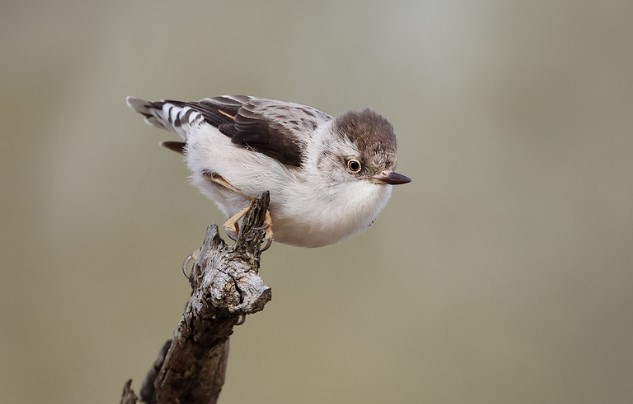Page Contents
Description
The strident staccato chatter of Masked Lapwings (Vanellus miles) is a familiar warning signal in the eastern Australian marshes and wet pastures. Masked Lapwings, with their long legs, are frequent wetter, and lusher on short pasture, crops, and marshy ground than the Banded Lapwing, and are rarely found far from water.
Clearing for pasture and irrigation has increased their habitat in many regions and they have exploited it well, even entering parklands in southeastern cities and roosting and nesting on the tops of high-rise buildings.
Masked Lapwing Diet
Yet despite such close contact with man, they have remained wary birds. In pairs or occasional non-breeding groups of up to a dozen or more, they pick up a range of surface-living invertebrates-insects, spiders, small crustaceans, and worms-from the ground and grass, even venturing onto beaches and tidal flats exposed at low tide. Their manner of foraging is typical of lapwings.
They stalk watchfully along; shoulders hunched and head forward, in much the same way as they run. Sighting prey, they dart the bill down and poke into tussock often at the end of a short run. Seeds may be eaten when insects are scarce in dry or cold weather.
Masked Lapwing Baby
Masked lapwing baby quits the nest within a few hours of hatching, not always together, to be led away by their parents to the shelter of rough pasture and dry ditches; the vacated nesting territory may be taken over by another pair. The young are brooded by both parents at night and during rain, and are defended vigorously; their parents dive at intruders with a daunting screaming chatter.
Identification
Both adult sexes are similar. However, the crown is black, back and shoulders mid to deep brown along with flight feathers black. Upper tail coverts and tail white, with the black subterminal band. Yellow, lappet-like wattles cover the face. Eyes are mid-yellow with the bill pale yellow with a dusky tip. The legs and feet are reddish-purple.
The buff and black-tipped spur on each shoulder. But the Northern race: smaller, with white collar and sides of the neck, mid-brown back, and large face wattles covering head over the eye. Also, the Southern race: larger, with a black collar and sides of the neck, deep brown back, and smaller face wattles not extending over the eye.
Intermediates: blend of both races. The immature birds as adults but crown and back flecked black and buff, wattles and wing spur reduced. The downy young bird is a bit brown peppered black and buff, with white underparts, a white-collar subtended by the black band, and yellow wattle in front of the eye.
Masked Lapwing Call
Masked Lapwings are fairly sedentary birds, and although wandering locally, mainly at night, rarely travel far between roosting and feeding grounds. Masked Lapwing call, given both from the ground to warn and in flight to keep contact, alerts other birds as well.
Main contact and alarm call by both sexes a strident, staccato kekekekekek, each syllable much shorter and sharper than in Banded Lapwing, and in the same pitch. Notes more spaced out in attack; also a single piercing kek. The running trills are given on display.
Nesting and Breeding
The nesting and breeding months are July-December in the south, November-June in the north, but also throughout the year after local rains. Both sexes co-operate in nest building- from stray material close by and in incubating. Nest a scrape on a low ridge, mound, or depression on the ground, lined with bits of grass, straw, rootlets-or unlined.
Also, at the night and during the day, flocks roost or rest standing in shallow water or on small islands. As breeding approaches, flocks break up into pairs that establish territory, returning to traditional grounds if they are still suitable and rearing more than one brood if the season is good; only non-breeders hang on in small groups.
Eggs
Eggs are laid at slightly more than 24-hour intervals. The bird not incubating may remain in the nest territory or move outside to feed. The bird lays eggs, three to usually four; yellowish-green to olive-brown blotched all over with dark brown, black and sepia; pyriform, about 43 x 32 mm in the northern race and 49 x 36 mm in southern. Therefore, the incubation period is about 27-28 days, for both sexes.
Distribution
The distribution of masked lapwing is Eastern and northern Australia and Tasmania, west to all of Eyre Peninsula and central Australia in the south, and Kimberleys in the north, including Dampier Land. The bird is found common on shores of swamps and lakes, but is a non-breeding visitor to most northern inland regions.
Also New Zealand (self-introduced) New Guinea and eastern Indonesia; vagrants reach Christmas, Lord Howe, Norfolk and Campbell Islands, and southwestern Australia. There are two races in Australia: one across the north, south to Townsville and Alice Springs; the other in the southeast, north to a line between Ceduna and Rockhampton. Areas occupied by hybrids and vagrants of both races.
Masked Lapwing Swooping
Masked lapwings or plovers swoop to defend their personal belongings of eggs or immature chicks. Masked lapwings attacks are normally seasonal, but most habitually during the breeding season, Therefore, the swooping more often than not stops when the eggs hatch and the baby bird can fly.
Size and Other Names
The other names of Masked Lapwing are Masked Plover and Spur-winged Plover. The size of masked lapwing is about 330-380 mm in length.
Flight
Moreover, the flight, although not fast, is of rather quick staccato wing beats below the horizontal, on round-tipped wings. When not breeding, they travel more widely and may form temporary flocks of several hundred.
Related Reading – The Versatile Little Ringed Plovers






